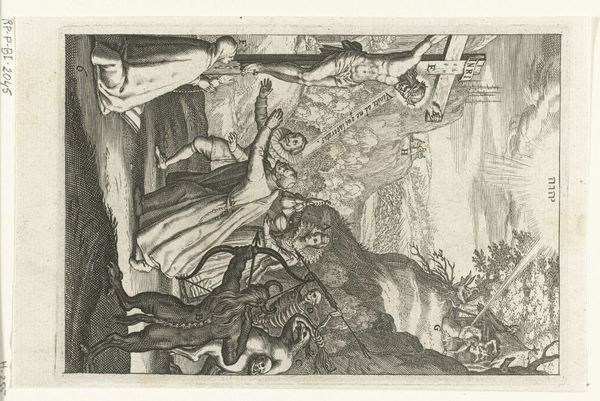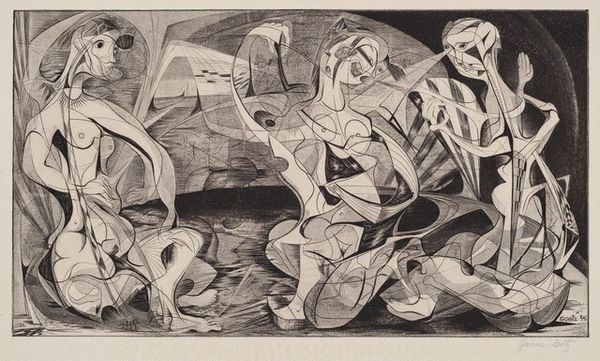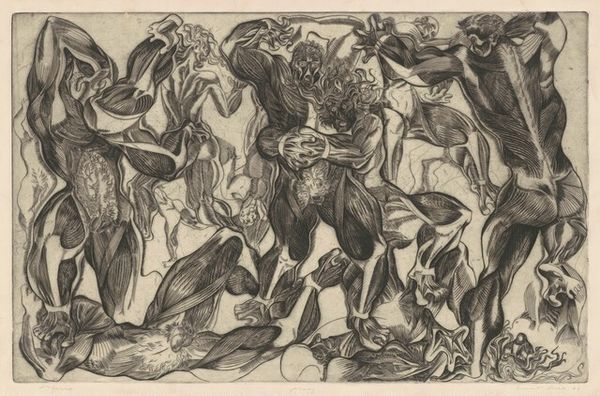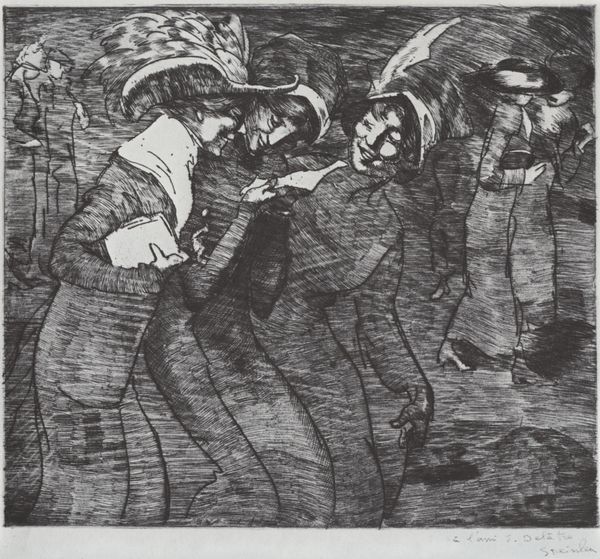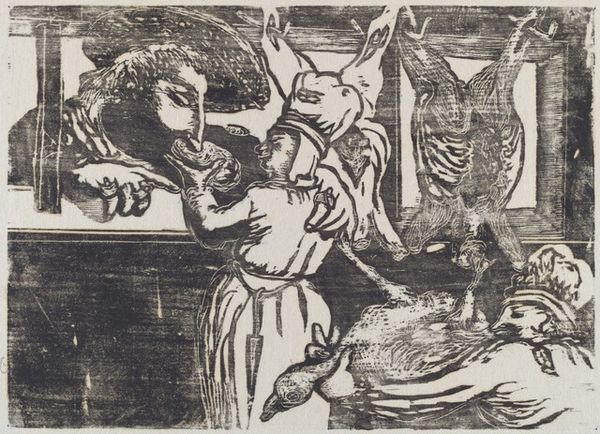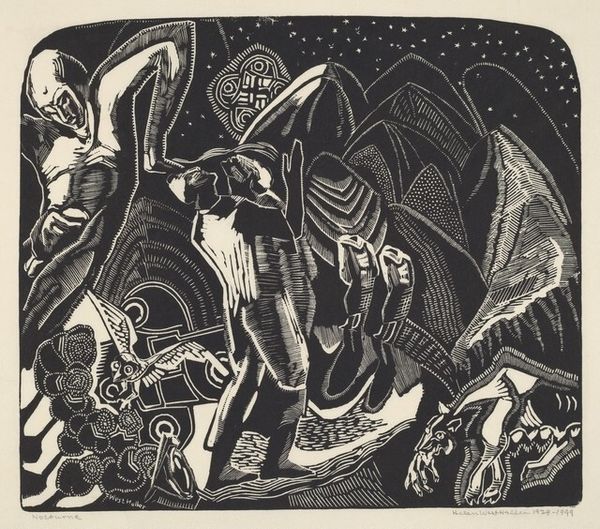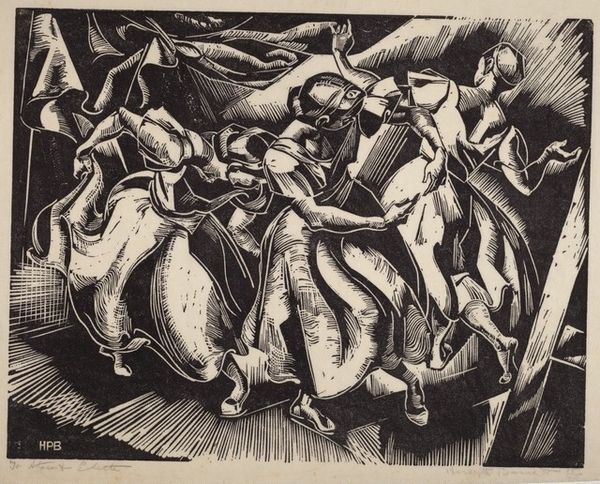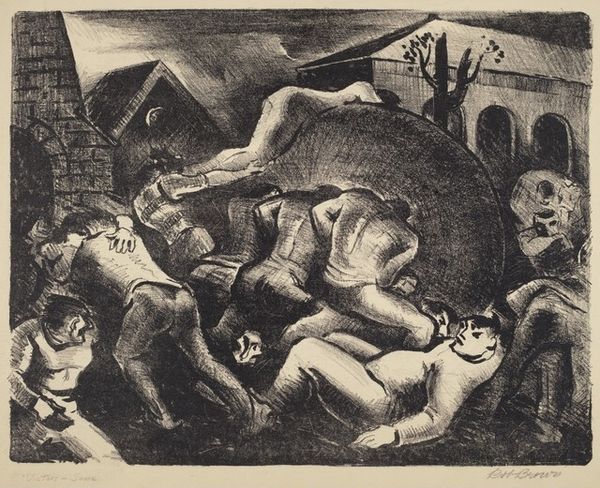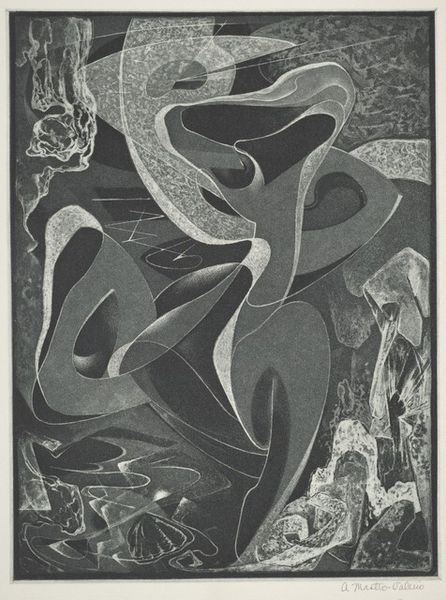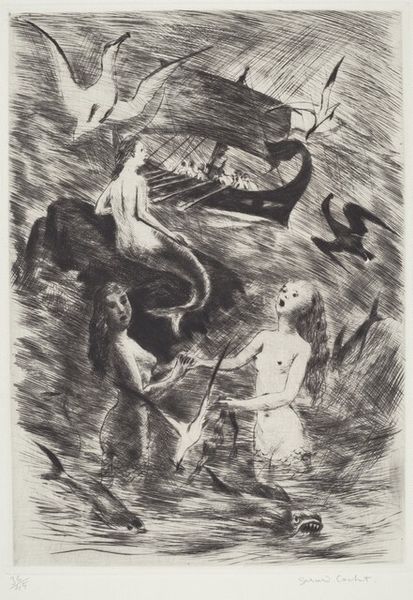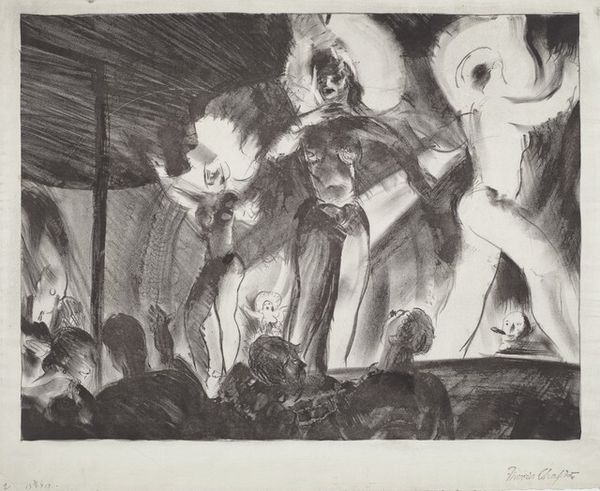
Dimensions: image: 240 x 316 mm sheet: 317 x 411 mm
Copyright: National Gallery of Art: CC0 1.0
Curator: Look at the dynamic tension present in this print. Isac Friedlander, working in 1931, created "Rhapsody in Black" using woodcut techniques. Editor: It has such a powerful visual rhythm. The contrast between light and shadow is incredibly striking, immediately creating a mood of energetic celebration mixed with something…else. What symbols do you find particularly evocative here? Curator: The placement of figures on their knees just below the dancing entertainer can be read as a symbol of historical repression in America, contrasted by the figure who, perhaps because of their minstrelsy, exists on top of them, giving voice to the realities and social stratifications for black people. The jazz music, of course, signifies cultural innovation, a form of resistance and expression flourishing despite oppressive conditions. I'm interested in your perspective on these traditional symbolic juxtapositions. Editor: Precisely, Curator! It echoes the duality found throughout African diasporic iconography: the sorrow songs evolving into spirituals, for example. Even the raised hands behind the conductor evoke centuries-old gestures of supplication and aspiration toward liberation. And then we are forced to consider how that orchestra leader with his upraised baton mirrors the tap dancer who leads with a cane, seemingly over others. The eye doesn't know where to look! Curator: And therein lies the genius of Friedlander's commentary! The social and cultural narratives present during the Harlem Renaissance become distilled through these potent symbols. We can trace echoes of those societal inequalities existing in present day conditions too, almost one hundred years after its creation. Editor: And the term "rhapsody," which classically applies to sweeping orchestral compositions, further emphasizes how this artwork serves as a complete picture; it tells the story of so many interconnected symbols during this pivotal moment in Black cultural identity. This piece reveals how our culture often codes meaning in symbols that evolve and circle back over time, taking on greater and often challenging weight in our present day understanding. Curator: Ultimately it serves as a vital reminder that historical injustices continue to reverberate. Editor: It gives potent symbols that ask us to consider the enduring power of music, performance, and visual expression, especially its function to both liberate and perhaps simultaneously confine in order to subsist.
Comments
No comments
Be the first to comment and join the conversation on the ultimate creative platform.
